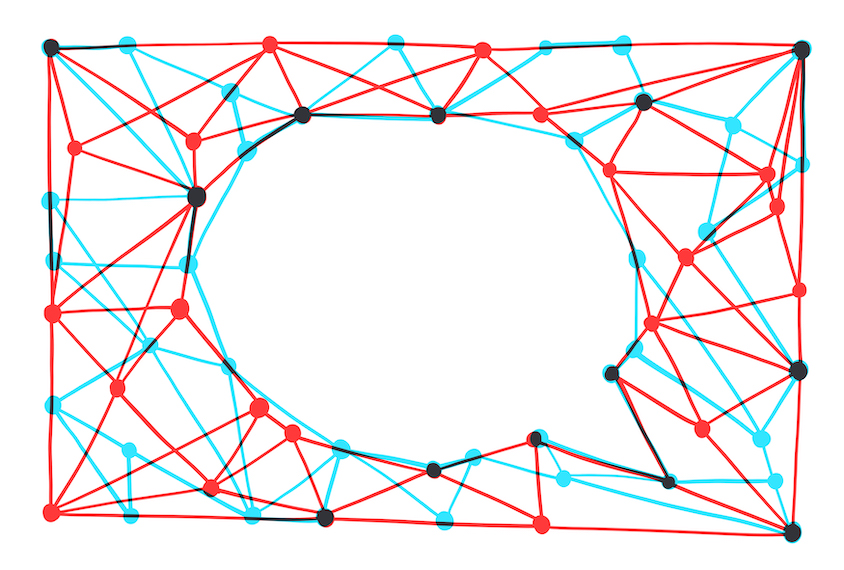The Broad Institute linked to its article, “A look back at the first year of NeuroDev,” published on its site 20 July. Spectrum covered initial findings from NeuroDev on 15 March.
Post by @broadinstituteView on Threads
Francesco Longo of the University of Gothenburg described his study, “Cell-type-specific disruption of cortico-striatal circuitry drives repetitive patterns of behavior in fragile X syndrome model mice,” published in Cell Reports 27 July.
Excited to share that our paper on cell-type specific changes in the striatal medium spiny neurons underlying the expression of RRBs in FXS mice is finally online @CellReports. Thanks to team members from @KlannLab, @CarterAG, @NicTritsch, and @BagniLab for their contribution!1/6 https://t.co/99YtMx1q9d pic.twitter.com/cNAEA3lOLA
— Francesco Longo (@fran_longo17) August 1, 2023
Saroj Kumar Sah of Yale University described his study, “Deficiency in the neural cell adhesion molecule 2 (NCAM2) reduces axonal levels of beta-site amyloid precursor protein cleaving enzyme 1 (BACE1), affects axonal organization in the hippocampus, and leads to behavioral deficits,” published in Cerebral Cortex 29 July.
Nicole Teaney of Mustafa Sahin’s lab at Harvard University and Boston Children’s Hospital shared her study, “Increased degradation of FMRP contributes to neuronal hyperexcitability in tuberous sclerosis complex,” published in Cell Reports 25 July.
I am incredibly proud to be a part of this team as we work to advance research surrounding rare neurodevelopmental disorders. And it’s a major milestone in my career as a young scientist: first published paper! #raredisease #neuroscience https://t.co/YAug6D5naX
— Nicole Teaney (@nicole_teaney) August 2, 2023
Jorune Balciuniene of PerkinElmer linked to her study, “At-risk genomic findings for pediatric-onset disorders from genome sequencing vs medically actionable gene panel in proactive screening of newborns and children,” published in JAMA Network Open 31 July.
Öyküm Kaplan Arabaci of the University of Oslo described her study, “Antidepressants escitalopram and venlafaxine up-regulate BDNF promoter IV but down-regulate neurite outgrowth in differentiating SH-SY5Y neurons,” published in Neurochemistry International 13 July.
Anthony Ramnauth of the Lieber Institute for Brain Development linked to the study “Voltage-Seq: all-optical postsynaptic connectome-guided single-cell transcriptomics,” published in Nature Methods 20 July.
Wai Kit Chan of the University of Edinburgh described his preprint, “Loss of PAX6 alters the excitatory/inhibitory neuronal ratio in human cerebral organoids,” posted on bioRxiv 1 August.
We extend our studies in understanding the role of PAX6 in neurodevelopment using human cerebral organoids!
Similar to mice, PAX6 loss results in ectopic inhibitory neurons but data indicates possible species-specific differences.
Short reporthttps://t.co/1ouAO4DI8W pic.twitter.com/rpy8MA5kAq
— Wai Kit (Calvin) Chan (@cwkcalvin) August 2, 2023
Vassilis Sideropoulos of University College London linked to his team’s study, “Anxiety, concerns and COVID-19: Cross-country perspectives from families and individuals with neurodevelopmental conditions,” published in the Journal of Global Health 28 July.
Excited to share our collaboration with 50+ brilliant researchers from across the globe! Our paper in @JGLOBHEALTH explores #anxiety from a cross-country perspective in parents and their #neurodivergent children. Full paper ???? https://t.co/3I9Fix9Uxp #mentalhealth #globalhealth
— Vassilis Sideropoulos (@VassilisSide) July 31, 2023
Carla Mazefsky and Kelly Beck, both of the University of Pittsburgh, commented on “Emotion dysregulation in autism with Carla Mazefsky,” published in Spectrum 1 August.
I was nervous with this coming out today. It’s more about me/my path vs. the research per se (like others in Synaptic). But it was a fun trip down memory lane to listen and reflect on my career. I’m lucky that (despite the stress) I do love what I do. @PittREAACT @PittPsychiatry https://t.co/xabtibOCqU
— Carla Mazefsky (@carlamazefsky) August 1, 2023
Really enjoyed listening to @carlamazefsky’s path on this podcast. https://t.co/A9ELqp2WBU
— Kelly Beck, Ph.D. (@mindfulbeck) August 1, 2023
The Autism Science Foundation linked to “Amy Wetherby: Impatient for progress,” published in Spectrum 26 July.
Amy Wetherby created tools for screening and early intervention for autism that have been used internationally. She then took these tools a step further and helps families us them in their own homes. What motivates her? Read her profile: https://t.co/A8EfPLHtBf
— ASF (@AutismScienceFd) July 26, 2023
That’s it for this week’s Community Newsletter! If you have any suggestions for interesting social posts you saw in the autism research sphere, feel free to send an email to [email protected].
Follow us on Facebook, Twitter, Instagram and LinkedIn. We are also now on Threads!






